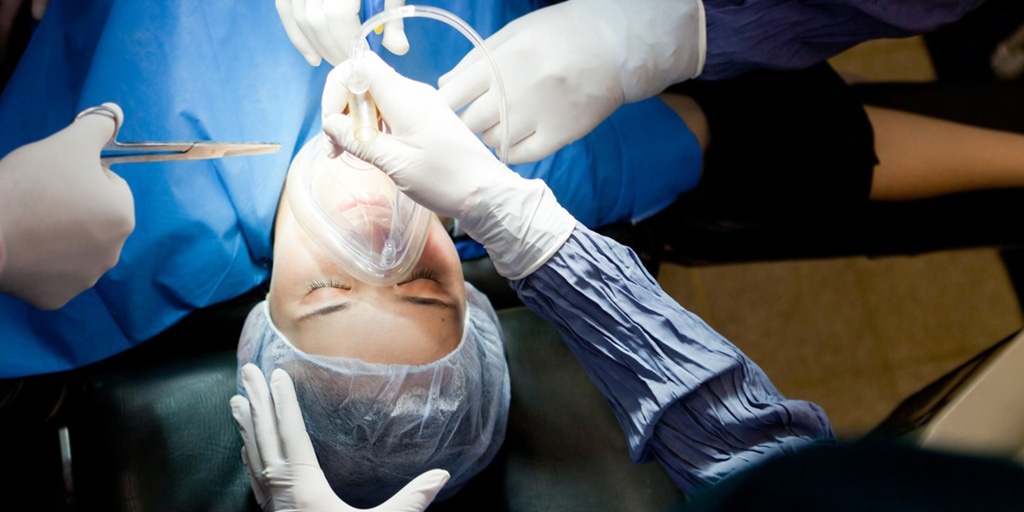
Surgical fires occur in, on, or around a patient who is undergoing a medical or surgical procedure. An estimated 550 to 600 surgical fires occur in the United States per year.
Oxygen-related fires can occur anywhere along the supply lines but most often are in the operating room where the oxygen concentration is the highest, and the equipment is constantly being turned on and off, wearing components and varying line pressures.
Oxygen Rich Environments Need Extra Care
While Oxygen is irreplaceable for human life, it is a vital component of any combustion. Oxygen will not burn by itself, but any combustible material in a rich oxygen atmosphere will deteriorate faster, ignite and burn faster.
This means special care for connections made with the correct parts for the facilities department. While fires at outlets or oxygen-handling equipment are rare, they do happen. One of the biggest causes of fires around the oxygen supply system is the wrong fittings being used. (1)
Piping, Valves and Fittings for Oxygen are Critical
There are special piping, valves, and fittings for oxygen, but sometimes general plumbing components “sneak” into the line.
While the valve will turn the flow on and off, the standard seals corrode faster and can get brittle and break off small pieces. These pieces can flow through the lines to clog an outlet or worse. In the surgical setting, these loose pieces can combust inside the anesthesia control equipment.
Importance of WAGD Systems in ORs
Virtually all operating room fires ignite on the patient. Waste Anesthesia Gas Disposal (WAGD) systems are critical to vacuuming away combustibles as well as excess oxygen that overflow the breathing apparatus. Some anesthetic gases are explosive or flammable. The WAGD system will remove these flammable gases from around the patient and surgical staff, as well as excess oxygen, which may present a combustion accelerant.
Waste Anesthesia Gas Disposal systems are critical to keeping the environment around the patient during surgery rich enough to maintain breathing while vacuuming away any combustibles as well as excess oxygen that overflow the breathing apparatus.
According to ECRI Institute, Medical Device Safety Reports,
“Frequently, leaking seals in (high pressure) oxygen systems are really cases of adiabatic compression ignition of the seats and seals of a valve that is not designed for oxygen use. When oxygen is allowed to flow from a high-pressure into a low-pressure volume, the recompression of the gas in the piping system can cause a rapid rise in gas temperature—up to 1,700° F. Certain materials cannot withstand both 100% oxygen and high temperature and are quickly ignited and burned away. Their products of combustion are sometimes carried in the oxygen stream and can cause injury to patients some distance from the valve. If the valve body is also incompatible with oxygen use, it too can ignite and burn in a kindling chain of ignition when the burning seats and seals provide enough heat to burn the metal.
Improper assembly of high-pressure oxygen regulators has resulted in several fires. In these cases, it is thought that pieces of Teflon tape, chips from seal materials, or latent hydrocarbon contamination was present in the high-pressure section of the regulators. Rapidly opening the oxygen cylinder caused adiabatic compression ignition of this material, which, in turn, ignited O-ring seals and then the aluminum regulator body.” (source)
Conclusion
While fires in ORs and around oxygen supply systems are rare, they do occur and can have life-threatening consequences.
The most effective way for facilities to avoid these incidents is to make sure that any work done on oxygen supply systems is performed by certified installers and then verified by ASSE-certified companies. This means that all the components used for constructing and repairing oxygen supply systems are approved for use with corrosive material.
Likewise, the WAGD systems in operating rooms should be inspected, at minimum, annually to make sure they are running unobstructed at full pressure and flow rates.
photo credit: Shutterstock.com




